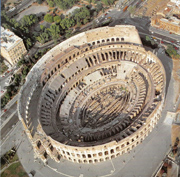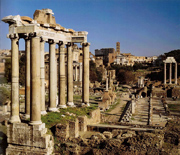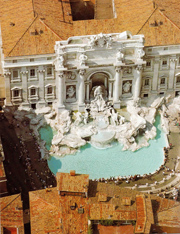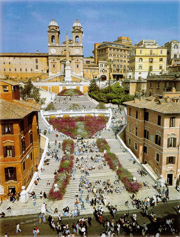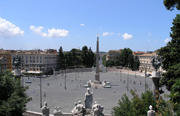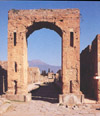
SHORE EXCURSION FOR DISABLED FROM THE PORT OF CIVITAVECCHIA TO ROME (COLISEUM, TREVI FOUNTAIN, PIAZZA DI SPAGNA AND PIAZZA DEL POPOLO)
Details
PRIVATE SHORE EXCURSION FOR DISABLED FROM THE PORT OF CIVITAVECCHIA TO ROME (Coliseum, Roman Forum, Fountain of Trevi, Piazza di Spagna and Piazza del Popolo)
You can rent a wheelchair with us for one or more days.
|
DURATION: |
9 hours |
|
|
PRICE: |
View the price list | |
|
AVAILABILITY: |
All-year-round | |
| THE PRICE INCLUDES: | English-speaking Driver & Air-conditioned Mercedes Car at Your disposal for 9 hours Private English-speaking guide for visiting the Coliseum, Roman Forum with its monuments THE ENTRANCE FEES AND THE RESERVATION FOR THE COLISEUM AND THE ROMAN FORUM ARE INCLUDED! We reserve Your tickets in advance: so, You don’t have to stay in the line for entering. |
|
SCHEDULE OF THE SHORE EXCURSION TO ROME FROM CIVITAVECCHIA PORT
|
| Meet with Your private English-speaking driver and his Mercedes limousine (with air conditioning) by the cruise ship at the Port of Civitavecchia |
| Arrival in Rome and meet with Your private English-speaking guide at the Coliseum area |
| 3-hour tour with Your private English-speaking guide of the Coliseum and Roman Forum with its monuments |
| 1 hour free time for lunch (not included in the price) |
| Pick-up with Your private English-speaking driver (without guide) and short drive to reach the Trevi Fountain in the centre of Rome |
| 2 hours of free time for the visit on Your own of the Trevi Fountain, the Spanish steps and Piazza del Popolo (without guide) |
| Pick-up close to Piazza del Popolo and back to the Port of Civitavecchia |
You will meet Your English-speaking driver by Your cruiseship at the port of Civitavecchia: Your private tour guide will be waiting for You by the Coliseum. We have decided to arrange for You a guided tour in the morning where You need a guide for the archaeological area. After lunch, You'll be left in the surroundings of the Trevi Fountain and You'll go there alone. If You feel like, it is possible to arrange for You the same guide in the afternoon too, but the price will change a little.
ROMAN FORUM:
Tour Highlights: Coliseum - Temple of Antoninus and Faustina - Arch of Titus - Arch of Septimius Severus - Basilica of Maxentius
- Curia (Roman Senate) - Temple of the Vestal Virgins - Temple of Saturn - Via Sacra - Temple of the Divine Julius - Temple of Castor and Pollus - Temple of Augustus - Arch of Constantine.
Of all the monuments in Rome, it is the Coliseum that thrills the most. It was here that gladiators met in mortal combat and condemned prisoners fought off hungry lions. The great symbol of eternal Rome still exerts a powerful hold. Built by the emperor Vespasian in the grounds of Nero’s palatial Domus Aurea complex, the Coliseum was inaugurated in AD 80. To mark the occasion his son and successor Titus held games that lasted 100 days and nights, duting wich some 5000 animals were slaughtered. Originally know as the Flavian Amphitheatre, the stadium had a capacity of 50,000 people.
TREVI FOUNTAIN:
Immortalised by a frolicking Anita Ekberg in Fellini’s film La DOlce Vita, the Trevi Fountain is Rome’s most famous fountain. The baroque bonanza was desigend by Nicola Salvi in 1732 and depicts Neptune’s chariot being led by Tritons with sea horses - one wild, one docile - representing the various moods of the sea. The water comes from one of the city’s earliest aqueducts and the name Trevi refers to the tre vie (three roads) which converge at the fountain.
SPANISH STEPS:
The famous Spanish Steps have acted as magnets for visitors since the 18th century. The piazza was named after the Spanish Embassy to the Holy See, although the staicase, built with a legacy from the French in 1725, leads to the French church Trinità dei Monti. At the foot of the steps, the fountain of a sinking boat, the Barcaccia, is believed to be by Pietro Bernini, father of the famous Gian Lorenzo.
PIAZZA DEL POPOLO
It was designed by Valadier at the beginning of the XIX century. It is an enormous square, architecturally superb and perfectly symmetrical. In the centre stands the city’s second obelisk, which was brought to Rome by Augustus, and erected here by Fontana under Sixtus V (1589).
According to a legend, in the early middle ages Nero’s spirit haunted this place where his ashes had been deposited in the Domitian family’s tomb. This is why the people destroyed the Mausoleum and built the church Santa Maria del Popolo, one of the most interesting in Rome. It was probably built in the XI century, but it was completely reconstructed in the early Renaissance. Among the many works of art to be seen in this church, noteworthy are the paintings by Caravaggio, "Saul on the road to Damascus" and "Crucifixion of St. Peter".
The Tour ends at Piazza del Popolo from where You’ll be picked up by our bus driver for the return to Civitavecchia.
Take water, camera && sun cream. In low season warmer clothing may be required!
